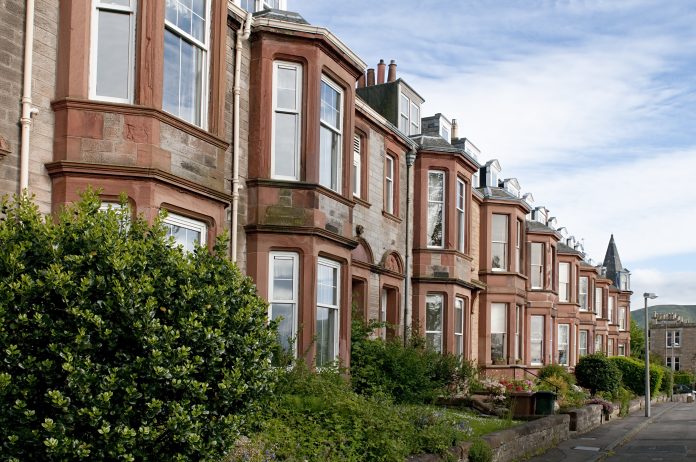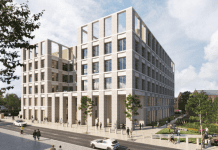According to a new report published by the Scottish Property Federation, rent controls and political uncertainty are impacting investors’ appetite to fund and deliver build-to-rent homes in Scotland
The Assessment of Scotland’s Rent Freeze and Impacts Report has showcased that the rent control system introduced under the Cost of Living (Tenant Protection) Act will disrupt the future supply of new homes for rent.
The report investigated the impact of Scotland’s six-month rent freeze and 3% rent cap on the Scottish build-to-rent market in a series of in-depth interviews with institutional investors.
Out of those interviewed, four investors deemed Scotland as ‘un-investable’ under current conditions
Out of the 14 investors interviewed with a combined £15bn of build-to-rent (BtR) assets, nine judged Scotland to be unattractive, including four who view the country as un-investable under current conditions.
Although Scotland has been slower to attract investment in the BtR sector than other parts of the UK, Glasgow and Edinburgh have been experiencing strong BtR growth in recent years.
The pipeline of BtR in Scotland sits at around 17,000, but two-thirds are in planning, including 6,000 properties with planning permission where construction is yet to begin on site.
Investors view Scotland as a ‘political risk’ due to legislative uncertainty and disproportionate rent interventions
Both Glasgow and Edinburgh have a shortage of high-quality rental properties. Despite the clear market appeal, investors now view Scotland as a political risk due to the combination of legislative uncertainty and the rent interventions, which are seen as disproportionate.
The build-to-rent sector typically attracts modest and consistent yields and is viewed by many as a stable, long-term investment.
The way in which the rent controls were introduced has increased the risk calculations for investors, with concern that the Scottish Government could implement other short-term policy changes and further undermine the BtR business model.
Build-to-rent homes can be built quickly and in large quantities
Build-to-rent homes can offer a viable solution to Scotland’s acute housing supply shortages as they can be built quickly in large numbers.
BtR also provides a range of housing options, from affordable housing to mid-market rental models. In addition, the new housing stock is more energy efficient, which helps to reduce bills for renters.
Investors are calling on the Scottish government to incentivise investment in the BtR sector
Investment in the BtR sector can be incentivised in several ways, including:
- Creating a stable policy environment that removes the risk of ongoing interventions in the market and reduces the risk premium
- Positive planning policy, including supporting density for BtR and dealing with planning applications quickly
- Working with the sector to foster confidence and trust for urgently required housing investment.
The lack of long-term policy has caused Scotland to be viewed as a risky investment
David Melhuish, director of the Scottish Property Federation, said: “The impact of the emergency legislation on the BtR market over the last six months is clear. The lack of long-term policy certainty means investors largely view Scotland as a risk, compared with more stable locations in other parts of the UK.
“This situation is a disincentive to investment and as a consequence investors are going to continue to divert capital elsewhere. The rental market in Scotland, and crucially renters, will continue to bear the brunt as new housing supply is constrained and demand for accommodation soars.
“At a time when we need more housing, and a quality rental sector, investment in Scotland is reducing. The industry and the Scottish Government should be working together to ensure Build-to-Rent investment is flowing into the country.”
Emergency legislation will have consequences for the affordability and availability of rental properties in Scotland
Dr John Boyle, director of Research at Rettie & Co and the main author of the research, added: “Our work clearly shows the potential for BtR in Scotland as part of the answer to the housing crisis. However, the sector has been stymied by what investors consider to be high levels of political risk.
“The recent emergency legislation has elevated these risks and less supply will come forward as a result, which will have consequences for affordability and availability of properties for rent in Scotland.”


















What’s better than rent control? A market in which landlords have to compete against each other for tenants, instead of the other way around. How do you get that sort of market? Not by making it less attractive to supply accommodation (as rent control does), but by making it less attractive NOT to—by imposing a tax on vacant lots and unoccupied buildings. The “vacancy tax”, as it is sometimes called, is not limited to what real-estate agents call vacancies, i.e. properties advertised to let; it also applies to unoccupied properties that are not on the rental market (preferably including vacant land, so as not to encourage demolition or deter construction), and prompts the owners to find occupants in order to avoid the tax.
Notice that a vacant-property tax is not only better for tenants, but also better for BUILDERS!
And notice that a vacant-property tax is meant to be AVOIDED, not paid. Moreover, avoidance of it would generate economic activity, expanding the bases of other taxes and allowing their rates to be reduced, so that everyone else—including tenants, home owners, and landlords with tenants—would pay LESS tax!